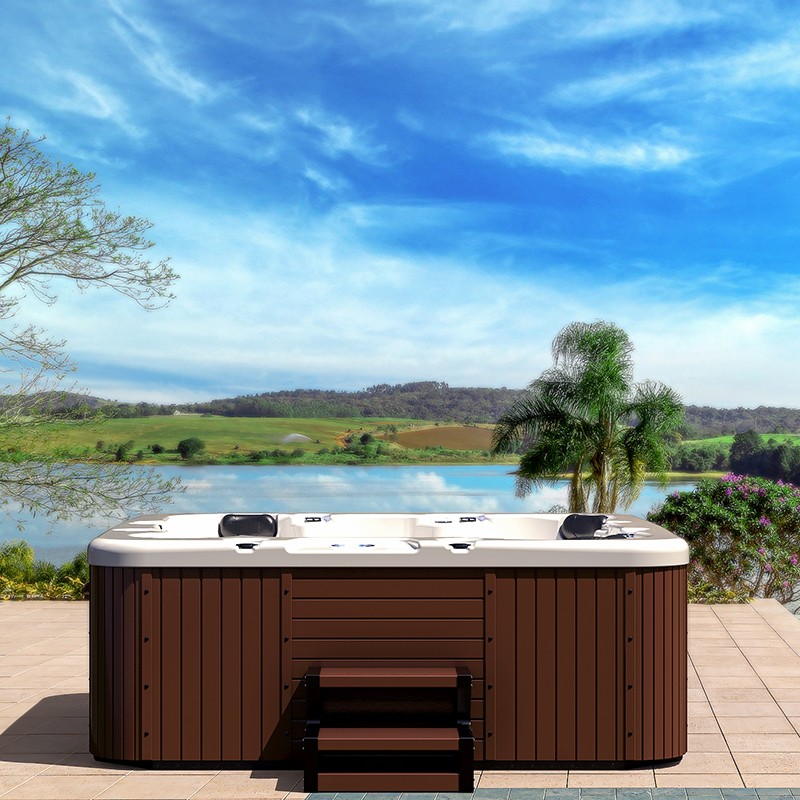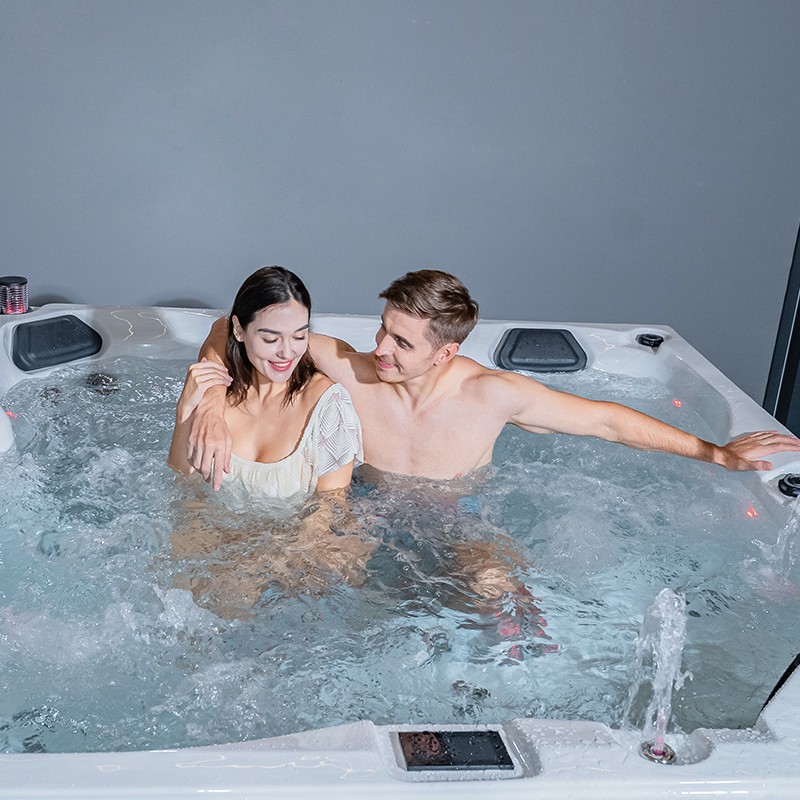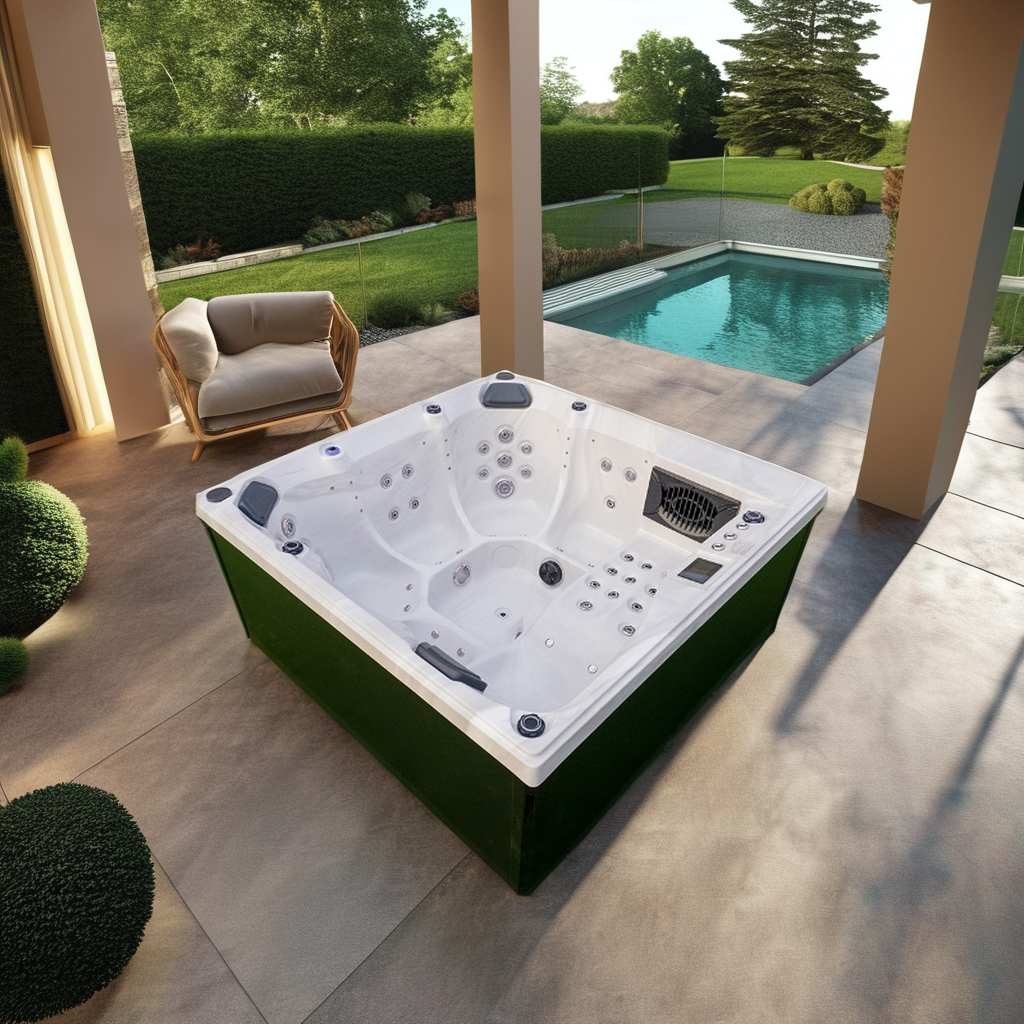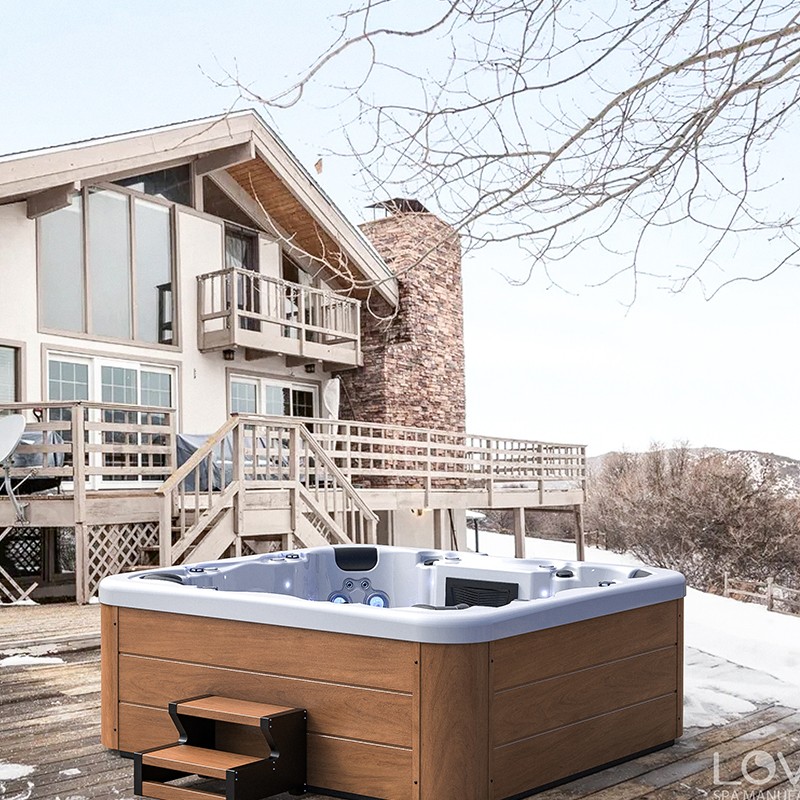
How many jets should a high-end outdoor spa hot tub have?
2025-10-06 15:35In modern homes and villas, outdoor spa hot tubs have become a key embodiment of a high-end lifestyle. They are not only luxurious amenities that enhance the home experience, but also a place for relaxation, wellness therapy, and social interaction.
When consumers choose an outdoor spa hot tub, the number of jets is a key factor influencing the quality of the experience and the effectiveness of the massage.
Many people wonder: How many jets should a high-end outdoor spa hot tub have to be considered ideal? This question involves multiple aspects, including the tub's structural design, ergonomics, jet type, usage scenarios, and technical implementation.
This article will provide a detailed explanation of the structural principles and jet configuration standards of an outdoor spa hot tub, helping readers make a more informed purchasing decision.

Basic Structure and Nozzle System Overview of an Outdoor Spa Hot Tub
Before discussing the number of jets, it's important to understand the structural composition and operating mechanisms of an outdoor spa hot tub. It typically consists of the following components:
· Main tub body: Typically made of high-strength acrylic, composite materials, or stainless steel;
· Pump system: Drives water circulation and controls jet pressure;
· Jet system (massage nozzles): Distributed around the seat, provides hydrotherapy;
· Heating system: Constantly controls water temperature for comfort;
· Control panel: Controls jet on/off, water temperature, lighting, and other functions;
· Filtration and circulation system: Ensures clean and hygienic water quality.
The jet system is the core component of an outdoor spa hot tub's massage and hydrotherapy effects. The location, type, number, and intensity of the jets determine the coverage, depth, and comfort of the hydrotherapy.

What is the function of outdoor spa hot tub jets?
In an outdoor spa hot tub, the jets aren't just water jets; they provide a highly customized body massage. To better understand the significance of the number of nozzles, let's first look at the functional classification of nozzles:
1. Classification by Function
· Rotating nozzles: The water flow rotates, primarily used for deep muscle tissue massage, such as the back and waist;
· Directional nozzles: The water flows in a fixed direction, focusing on specific muscle groups, suitable for legs, forearms, etc.;
· Pulsing nozzles: Intermittent water jets simulate a tapping massage, used to relax the nervous system;
· Bubble nozzles: A pump releases fine bubbles to enhance buoyancy and provide a soothing effect throughout the body;
· Adjustable nozzles: The water flow angle and intensity can be adjusted to suit different preferences.
2. Classification by Body Area
· Back Jet Set: Typically features 2 to 6 jets, designed to relax the muscles on both sides of the spine;
· Lumbar Jet Set: Typically uses high-pressure water jets to relieve sitting fatigue;
· Leg and Foot Jet Set: Enhances blood circulation throughout the body;
· Neck Jet Set: Available in a limited number of high-end models, it simulates a hot stone massage effect;
· Full-Body Bubble Jet Set: Typically located at the bottom of the tub, it provides a wide-area, wrapping massage.
As can be seen, different types of jets determine the diversity of functions. The number of jets isn't simply "more is better"; rather, a strategic combination of type and distribution is required to achieve a truly high-end spa experience.
Key Factors Considering the Number of Jet Sets in a High-End Outdoor Spa Hot Tub
There's no single answer to the question of "how many jets should a high-end outdoor spa hot tub have?" It's closely related to several key variables. Let's break down these variables from a professional perspective.
1. Capacity
Outdoor spa hot tubs are typically categorized by capacity, accommodating 2, 4, 6, 8, or even larger sizes for 10 or more people. A larger number of people requires more massage stations, and accordingly, more jets.
Capacity | Recommended total number of nozzles (high-end configuration) |
| 2 people | 20-30 nozzles |
| 4 people | 30-50 nozzles |
| 6 people | 40-70 nozzles |
8 people | 60-90 nozzles |
| 10 people+ | 80-120 nozzles |
Note that the above standards are recommended for high-end outdoor spa hot tubs. Standard models or simplified configurations may have fewer jets.
2. Massage Area Coverage
A truly high-end outdoor spa hot tub should provide hydrotherapy coverage for the following areas:
· Upper back/scapular area
· Lower back/both sides of the spine
· Buttocks and back of thighs
· Calves and soles of feet
· Arms and palms
· Lower chest
To achieve this coverage, each massage station requires at least 6-10 jets. Therefore, if a six-person tub offers six massage stations, the total number of jets should be at least 60 to ensure full-body comfort and a complete hydrotherapy experience.
3. Jet Adjustability and Re-positioning
High-end models typically feature jets that can be adjusted for intensity, angle, and even switch between massage modes. To provide a wide range of hydrotherapy options, some jet areas require duplication, such as:
· Double-layered jets on the back (upper rotating layer + lower directional layer);
· Dual jets on the feet provide forefoot and heel massage;
· A triple-jet layout on the waist covers the spine and lateral psoas muscles.
This duplication also directly increases the number of jets.

The Synergy Between the Number of Spa Hot Tub Jet Heads and Pump Power
Increasing the number of jets must be supported by a corresponding power system. If an outdoor spa hot tub has too many jets but insufficient pump power, water pressure will decrease, massage effectiveness will be compromised, and the experience will be compromised. Therefore, the number of jets in high-end equipment must be matched to the pump system:
Nozzle Quantity Range | Recommended Pump Power |
| 20-40 Nozzles | 1.5HP or higher dual pumps or a single large pump |
| 40-60 Nozzles | 2HP or higher dual pumps or a 3HP or higher single pump system |
| 60-90 Nozzles | 3HP or higher dual pumps or a 3HP or higher + circulation pump combination |
| 90+ Nozzles | 3HP or higher three pumps + an independent air pump system |
Many jets but weak pump power will only result in insufficient water output and weak jet force, defeating the purpose of the massage. Therefore, the number of jets is not just a matter of quantity; it also reflects the power system's capabilities.
Professional Principles for Spa Hot Tub Jet Distribution Design
In the design of outdoor spa hot tubs, jet distribution must adhere to ergonomic and hydrodynamic principles. A proper nozzle layout not only impacts the user experience but also directly affects energy consumption and noise control:
1. Ergonomic Positioning
• Nozzles should be aligned with key pressure points on the body, such as the lower edge of the shoulder blades, spine, and hips.
• Avoid directing nozzles toward sensitive areas (such as the chest and abdomen) to prevent discomfort.
• Foot nozzles should be angled upward, not parallel to the floor, to ensure that the water flows upward and covers the acupressure points on the soles of the feet.
• Avoid placing nozzles in the head area to prevent water from entering the eyes and nose.
2. Zoned Layout
High-end outdoor spa hot tubs typically divide the nozzles into several zones, such as:
• Zone A: Rotating back nozzles
• Zone B: Powerful waist nozzles
• Zone C: Multi-point leg nozzles
• Zone D: Bottom air bubble nozzle system
This design not only helps with energy conservation (it can be activated by zone) but also allows users to select massage areas based on their preferences.

Common Misconceptions and Purchasing Tips
1. Is more nozzles better?
The number of jets is certainly an important factor in determining the effectiveness of a spa treatment, but more is not necessarily better. If jets are too densely packed in a small space, water flow will interfere with each other, negatively impacting the quality of the treatment. More important is the rationality, directionality, and applicability of the jet layout.
2. Do all jets operate simultaneously?
Most high-end outdoor spa hot tubs feature zone control, allowing users to selectively activate certain groups of jets. Not all jets must operate simultaneously, as this would result in excessive energy consumption and wasteful use of resources.
3. Are the jets complex to maintain?
Despite the large number of jets, the cleaning and maintenance system is often integrated with the overall circulation and filtration system. Choosing a model with automatic cleaning and removable nozzles can significantly reduce ongoing maintenance.
Adequate Standards for the Number of Jet Heads in a High-End Outdoor Spa Hot Tub
In summary, the number of jets in a high-end outdoor spa hot tub should be determined based on a comprehensive consideration of the number of people accommodated, the number of massage stations, the functional configuration, and the hydraulic system capacity. Reasonable standards are as follows:
• Each massage station is recommended to have 6-10 high-quality, functional jets.
• A four-person bathtub recommends a total of 30-50 jets, a six-person bathtub recommends 40-70, and a bathtub with eight or more people recommends no fewer than 70.
• The power system must be coordinated with the number of jets to ensure jet intensity and consistency.
• The jet distribution should conform to ergonomic principles to ensure effective water therapy performance.
Are spare parts and accessories available for purchase?
Yes — Guangzhou HuanTong supplies replacement parts and accessories for our hot tubs and swim spas, including jets, valves, filters, pillows, pumps, and skirting components. We maintain inventory and can provide spare parts quotes for single items or bulk purchases.
For dealers and service partners, we offer wholesale pricing for spare parts and can provide technical documentation to support repairs and installation.
